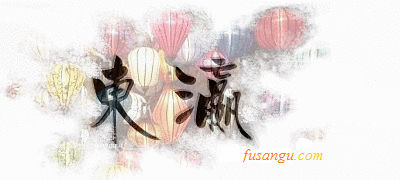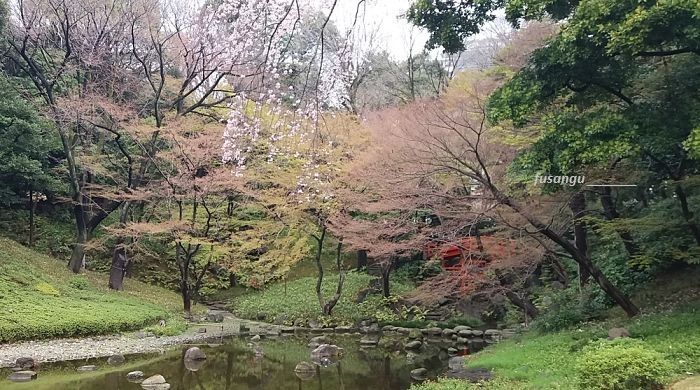
Visiting Tokyo in three days is not easy. The city is very large and there are many places to see and things to do. On top of that, learning how to get around requires some time.
It is therefore of utmost importance to prepare the visit as carefully as possible, having a clear image of what places should be visited, how to organise the itineraries, how to make use of the public transport system and where to stay.
Three days are not much time but if you carefully organise the visit you will have a satisfying experience.
The programme described hereafter offers a good introduction to the astonishing capital of Japan, from its historical heritage to its contemporary image.
The itinerary has been conceived as to minimise difficulties in getting around making transfers easy, short and inexpensive. As a consequence, each day is devoted to a relatively small area or to places efficiently connected to each other.
Given the premise, here is how we suggest you plan your visit:
-
Day 1: Northeast, Taito and Sumida districts (Ueno Park, National Museum of Tokyo, Asakusa area, Senso-Ji temple, Sky Tree Tower);
-
Day 2: City centre, Chiyoda and Bunkyo districts (Eastern Imperial Palace Gardens, Yasukuni Shrine, Koishikawa Koraku-En garden, Yushima Seido temple, Kanda area, electric town of Akihabara);
-
Day 3: West, Shibuya and Shinjuku districts (shopping area around Shibuya Station, Aoyama area, Omotesando, Meiji Shrine, Shinjuku-Gyoen Park, Tokyo Metropolitan Government Towers, Shinjuku Station area).
Day 1: Taito and Sumida
The first day is spent in Taito and Sumida districts. This is where you will have impressions of how Tokyo was before the war. The area covers much of what was previously called Shitamachi.
Though not much remains in the shapes of present day buildings, the urban dimension, the context and somehow the atmosphere are reminiscent of what Tokyo was before being flattened during the last year of World War II.
If you enjoy walking you can follow this programme by just getting around on foot. Otherwise, easy and fast rides are offered by the subway system (Ginza and Asakusa Line).
Morning
Ueno is a great place to start your journey in Tokyo. Beside being easy to reach from any part of the city as well as from Narita Airport, Ueno is also one of the places where you should find accommodation if you want to make things easy. Hotels and hostels in the area are not too expensive but they are easily fully booked (more about this point at the end of the page).
Ueno Park is a fascinating green area which was created at a time when Tokyo was imitating many aspects of Western urban planning. A few temples and shrines lie within the area. Among them not to be missed are the beautiful Bentendo and Toshogu Shrine, a glittering anticipation of the artistic masterpieces you may see if you choose to visit Nikko.
The beautiful park is also one of Tokyo’s favourite cherry blossom spots. Around end of March beginning of April the alleys are covered in clouds of white petals. Some trees of late blossoming varieties will please the latecomers.
Absolutely not to be missed out on is Tokyo National Museum, an outstanding collection of artworks which provides a unique opportunity to get to know the country’s ancient culture and art.
Even if you choose to visit only the main hall, we suggest you allot at least 3-4 hours.
Afternoon
A quick ride with the Ginza Line takes you to Asakusa Station. You can also get there on foot, even if the area you have to go through has not much to offer.
Asakusa is widely considered to be Tokyo’s traditional district. While you will not see old houses and vestiges of the past, the area retains the scale and the atmosphere of bygone times. Small restaurants, shops and family run businesses make for delightful views. What you see must be complemented by a good deal of imagination, possibly nurtured by some readings.
A must-see is the Senso-Ji, historic Buddhist temple. While this was completely destroyed during the fire bombings in 1945, the nearby Asakusa Shrine survived.
You can access Senso-Ji through Nakamise-dori, an alley along which you can find plenty of souvenir shops. Quality is variable but you can find many cheap items and ideas for gifts.
Nearby Hanayashiki amusement park would make for a journey into the past but time is too limited and you should postpone this visit to the evening.
After visiting Senso-Ji you can reach Sumida. Again, you can go there on foot or by subway. If you visit Tokyo during the cherry blossom we suggest you go on foot, so as to stroll in Sumida Park.
In Ryogoku, the area in Sumida just across the river, you can find Kokugikan, the country’s most celebrated sumo arena and Edo-Tokyo Museum, an amazing narration that will allow you to get to know Tokyo’s recent history.
Taking the Asakusa Line you can reach the Tokyo Sky Tree on top of which you can enjoy a commanding view of the gigantic conurbation of the capital of Japan.
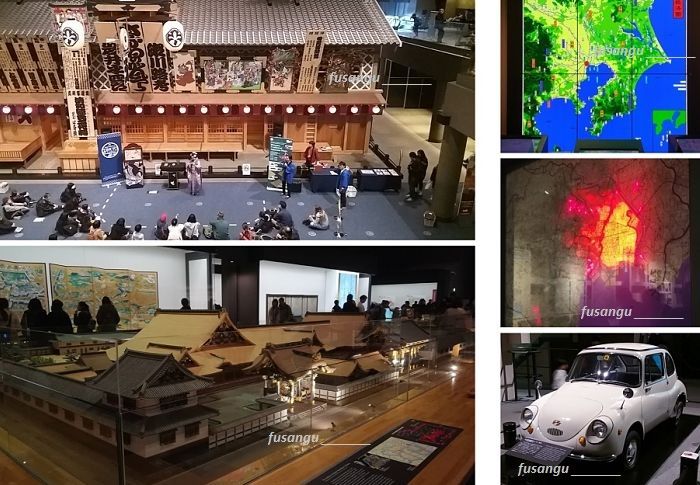
Other possible visits
It is unlikely that you will have time for more visits but if it is the case you may also pay a short visit to the Sword Museum or Yokoamicho Park. In the latter you can visit the Great Kanto Earthquake Museum as well as the Memorial for the Victims of the 1945 Bombings.
Before visiting Ueno you may have a walk through Yanaka, one of Tokyo’s traditional areas. Again, time is limited so you should be careful in your decisions.
In the evening: 4 options
In the evening there is plenty to see and do. We suggest you choose among the following places and activities:
-
Akihabara, the so-called “electric city” is a must-see for anyone fond of anime, manga, video and computer games and contemporary culture;
-
Kodokan, the world sumo headquarters are open to the public. You can watch or even attend the training. The nearby Tokyo Domu is an entertainment complex;
-
Rikugi-En, in Bunkyo, one of Tokyo’s most important and beautiful gardens, it is open to the public till the evening during the cherry blossom season;
-
Meguro-gawa, a narrow river lined with cherry trees, lit during the blossom season.
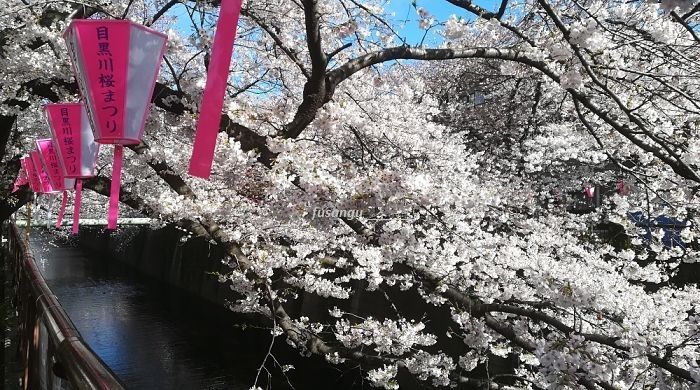
Variant: Yanaka
Traces of the ancient city are even more evident in Yanaka, a small and quaint neighbourhood to the east of Ueno Park. The area is easily accessed on foot from Nippori Station (served by Yamanote JR Line).
A large cemetery where notable and common people rest is in the centre of Yanaka. Old temples and shrines surround it. A visit to Yanaka should also include Yanaka-Ginza, a narrow alley where you can find picturesque shops, tiny restaurants and street food stalls.
If you choose to visit Yanaka you will necessarily have to drop other points of interest from your programme.
A possible itinerary passes through these areas:
-
1) Yanaka;
-
2) Ueno;
-
3) Asakusa;
-
4) Ryogoku.
There will not be enough time to visit museums in Ryogoku though.
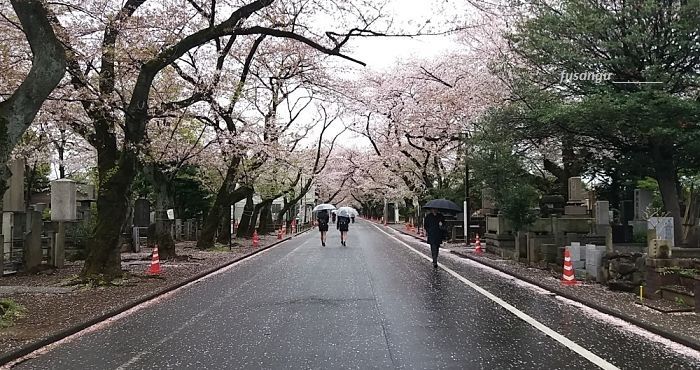
Day 2: Chiyoda, Bunkyo
The second day programme requires covering larger distances. The visit focuses on Chiyoda and Bunkyo districts, areas in the centre of Tokyo.
Morning
Tokyo Station is an ideal starting point for this itinerary. The surrounding Marunouchi is the financial centre of the city.
With a short walk you can reach the Eastern Gardens of the Imperial Palace and then see the moats and massive poligonal walls surrounding the residence of the sovereign.
Very close to the Imperial Palace are Chidorigafuchi, amazing scenery during cherry blossom season, and Yasukuni Shrine.
Yasukuni Shrine is a shinto shrine where the Japanese venerate the spirits of those who gave their life for the country in the wars. It was built in the aftermath of the Boshin War, the civil war which marked the end of the Feudal era.
Inside the shrine grounds is Yushukan, a museum which portrays controversial points of view regarding the recent history of Japan. While this narrative is vehemently rejected in countries like China and Korea who suffered under Japan’s rule, visiting the museum and looking at things from a different perspective is certainly a valuable experience.
Afternoon
After visiting Yasukuni Shrine you can reach Ichigawa Station on foot. Here you can choose among three options:
-
1) Visit to Bunkyo e Kanda;
-
2) Visitto Shinjuku;
-
3) A brief excursion to Kamakura.
1): Visit to Bunkyo e Kanda
From Ichigawa Station you can reach Iidabashi Station by train (JR Chuo Line). From this station you can walk to Koishikawa Koraku-En, a magnificent landscape garden.
The garden is the starting point of an interesting path through Bunkyo and Kanda, areas full of temples and sightseeing places, which nevertheless is usually neglected by foreign tourists. These are the main places to visit:
-
Yushima Seido, historic Confucian temple;
-
Kanda Shrine, one of Tokyo’s most revered shinto shrines;
-
Ochanomizu and Jimbocho, two residential areas famous for a large presence of bookshops and musical instruments shops. Nearby are some of Tokyo's major universities.
If you like walking through the ordinary city you may want to reach Ueno or Akihabara.
The area is well served by the mass transit system, so you are never too far from a subway station.
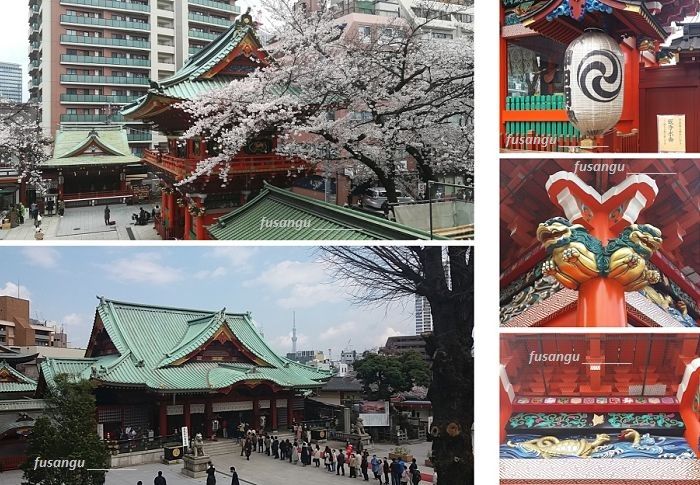
2) Visit to Shinjuku
As you move from Chiyoda to Shinjuku you can explore Yotsuya, a residential and commercial area. Along the path leading to Shinjuku Station you can visit a few museums:
-
1) Fire Museum;
-
2) Tokyo Toy Museum;
-
3) Samurai Museum.
In the evening you can plunge into the noise of lights, sounds and temptations of Shinjuku, a place of contrasts, one of the symbols of modern Japan.
If you just want to see the commercial area around Shinjuku Station, in less than 15 minutes you can reach it by taking a train on the Chuo Line. We suggest you do not miss out on the Shinjuku-Gyoen, a vast park, particularly beautiful in spring and autumn.
3) Short trip to Kamakura
If you have done with Chiyoda by 10:30 it is worth considering a short day trip to Kamakura. The time being very limited, you have to focus on a very limited area of the locality.
We suggest that you choose one of the following options:
-
1) Kotoku-In and Hase-dera;
-
2) Zen temples in Kita-Kamakura, a locale just north of Kamakura.
Day 3: Bunkyo, Shibuya, Harajuku, Shinjuku
The third and last day focuses on the western part of Tokyo, the districts of the modern and contemporary city.
Morning
A perfect start is a visit to Rikugi-En, a traditional garden of exquisite beauty. Every scene is a depiction of classical poetry themes. This is the kind of places that can be best appreciated having prior knowledge.
Rikugi-En can be reached on foot from Komagome Station. From here you can move to the next destination, Shibuya, the young city. Similarly to Shinjuku, the station here is the centre of the action and sightseeing. All around the station are shopping malls, some of which may easily entrap you for a day.
If you manage, try to get out by 12:00, not after paying your respects to the statue of Hachiko.
From Shibuya you can reach the next destination, Meji Shrine by train. We suggest you walk and go through Aoyama, an upscale residential area full of nice coffee shops.
Once you reach Omotesando, you have to turn left and go along the large boulevard. This is one of Tokyo’s luxury districts.
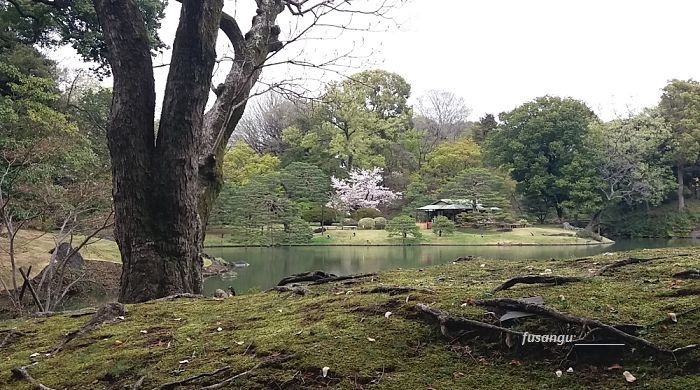
Afternoon
If you want to make things easy and visit only one place between Shibuya and Shinjuku, you will mostly choose Meiji Shrine and the beautiful park surrounding it.
If you have little time opt for Shinjuku-Gyoen, a large park with Japanese and western style gardens. This is most interesting in March and April, when you can see many varieties of plum and cherry trees. A lot of early and late flowering varieties can be found here.
If you want to see the city from the top of a skyscraper but you are not willing to pay the exorbitant amount request at the Tokyo Sky Tree, the Metropolitan Government Towers are for you.
Finally, it is time to explore the surroundings of Shinjuku Station, one of the most vibrant and extravagant areas of Tokyo and the whole nation.
Dining options are virtually limitless. A good choice is to dine in an izakaya, a typical small and cheap eatery where you sit on the floor and enjoy simple cheap dishes and drink beer.
Variants
If you need to buy electronic devices of any kind, you can head to Ikebukuro. Around the station (easily reachable with Yamanote Line), you can find lots of departement stores.
If you are fond of traditional culture and arts do not miss out on a visit to Nezu Museum, an outstanding collection of works of at from Japan and other East Asian countries.
Three days in Tokyo: how to get around
If you want to make things easy and save time and money, you ought to choose well the place where to stay. Great options are Ueno, Asakusa and Shinjuku. Second choices are Sumida and Akasaka. Refer to the next paragraph for more details.
Urban railway and subway
There are no tourist passes allowing you to use both the JR urban lines and the metro lines. Furthermore, you should take into account that Tokyo’s subway is made of two separately managed networks, the larger Tokyo Metoro and Toei subway system.
The itinerary described in this page has been conceived as to simplify the organisation of the trip and minimise travel time and difficulties.
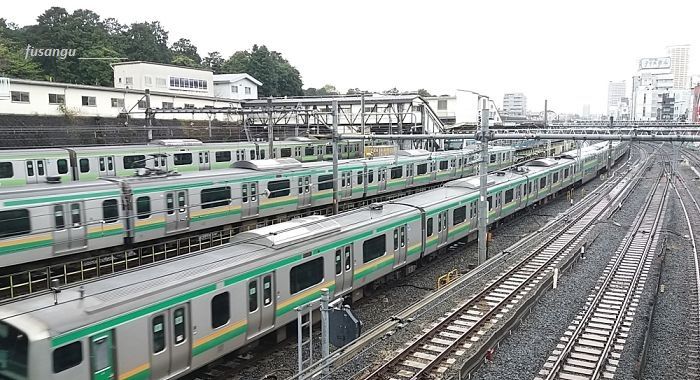
Day 1: how to get around in Ueno, Asakusa and Ryogoku
During the first day visits are limited to Ueno, Asakusa and Ryogoku. The three neighbourhood are adjacent to each other and distances are very limited. You may choose to employ one of the following ways to move:
-
By subway: Ginza Line between Ueno and Asakusa; on foot between Asakusa and Ryogoku;
-
By train: Sobu Line between Akihabara (which you can reach on foot from Ueno) and Ryogoku.
The second solution involves a stop in Akihabara, a nice place full of restaurants and shops. Along the way from Ueno you can also visit Ameyoko market and a few craftsmen’s shops.
Day 2: how to get around in Chiyoda and Bunkyo
During the second day sightseeing takes place within Chiyoda and Bunkyo areas. The two districs are adjacent to each other and distances are quite limited. You may choose to employ one of the following ways to move:
-
By subway: Marunouchi and Shinjuku lines between the centre and Kudanshita Station, located a few steps aways from Yasukuni Shrine; Namboku and Oedo, between the shrine and Kanda or Bunkyo;
-
By train: Chuo Line between Ichigawa (not far from Yasukuni Shrine) and Ochanomizu (which is the place from which you can access Bunkyo).
Day 3: how to get around in Shinjuku
On the third day you have to move between Shibuya and Shinjuku. The following options are available:
-
By subway: Fukutoshin Line between Shibuya and Higashi-shinjuku stations;
-
In treno: Yamanote Line.
The first option requires you to walk a little.
As you can see all transfer make use of either the subway or the urban railway networks. It is not necessary to get around by bus, which would also be slower and more difficult.
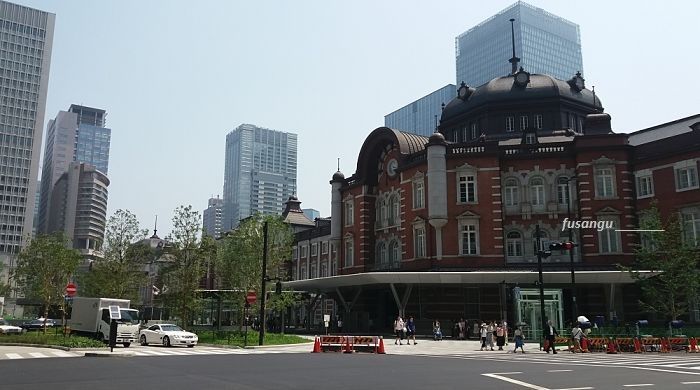
Three days in Tokyo: where to stay
The best places to stay if you intend to follow this itinerary are:
-
1) Ueno (or nearby Asakusa), neighbourhood easily accessible from anywhere, including Narita Airport. There is an ample variety of accommodation solutions, ranging from hostels to modern and western-style hotels. A sizeable number of cheap and mid-range ryokan are located between Ueno and Asakusa;
-
2) Shinjuku, the nightlife centre. Here most hotels are modern and sleek western-style structures in high-rise buildings, very few have a touch of Japanese aesthetics;
-
3) Chiyoda, near Tokyo Station or Kanda Station, the centre of the centre of the city. Many of the city’s most luxurious hotels can be found in this area. Mid-range hotels and good quality hostels are found near Nipponbashi (north-east of the station).
These three districts are well connected to any part of the cities as they are served by the circular Yamanote Line as well as by a few of subway lines.
If you are still unsure as to how to make choices, you may refer to the following criteria:
-
Saving money: in general among the areas mentioned here, Asakusa is the first choice when it comes to looking for cheap hotels. Many hostels are located near Asakusa Station. A few mid-range hotels are located between Asakusa and Ueno. If you seek a good price-quality ratio and you do not mind getting a little away from the centre, focus your search on Sumida. The quarter has not much to offer to a tourist but it is quiet, clean and very well connected to the city centre;
-
Easiness of transfers: all three areas are well connected and easy to reach from any areas of Tokyo and the airports. If we were to make a choice, we would say that Ueno is the best choice in this regard;
-
Side-trips: from Tokyo it is possible to reach many interesting tourist destinations of outstanding natural beauty and cultural significance, such as Nikko, Kamakura, Hakone and the Five Lake Region. All three areas mentioned here are easy starting point of day excursions.
If you choose to visit Nikko, taking into account that you ought to start your trip early in the morning, Asakusa is definitely the best choice. Tobu trains to Nikko leave from Asakusa Station. If you want to visit Hakone or Kawagoe, Shinjuku provides the best base. Tokyo Station is where you can start your trip to Kamakura;
-
Nightlife: Asakusa is a quiet neighbourhood. You would like it for a day or two but you might find it a bit boring later. Shinjuku is the place to stay if you want to explore Tokyo’s night- Chiyoda caters only in terms of high-end restaurants and cocktail bars.
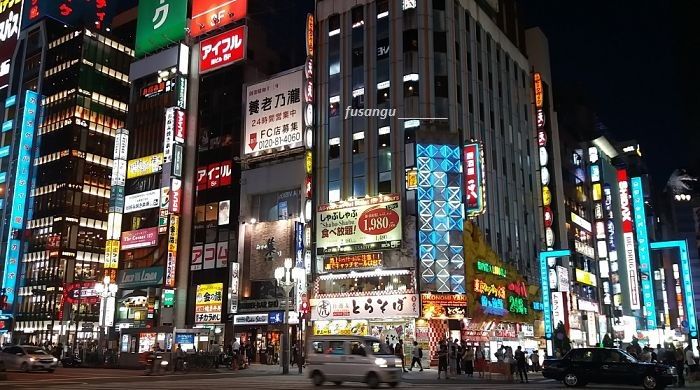
This programme is ideally part of our recommended Japan 10-day itinerary.
Related articles:
Tokyo 2,5-day itinerary | Tokyo 3,5-day itinerary
